-
Posts
6,103 -
Joined
-
Last visited
-
Days Won
32
Content Type
Forums
Detector Prospector Home
Detector Database
Downloads
Posts posted by Chase Goldman
-
-
-
48 minutes ago, JohnnyDigs said:
I totally understand what I quoted you on this was a separate question
I respect your decision not to make any claims if you don’t want to I’m just trying to learn and see if there was anything I can be listening for other than just ferrous and nonferrous. Thank you for your time 🙏🏻
As Jeff stated and also implied, it's not something you can really describe or put into words in terms of tonal nuances. It is very subtle and far from foolproof. The best you can do is just get out there dig everything to train your brain on what does and doesn't sound like probable junk until it becomes something you don't consciously think about you just react based on experience and what you are hearing and seeing. At this point, you simply need to rack up swing hours and target recoveries and recognize you are just always going to dig a lot more trash than treasure (set realistic expectations) but that with time you will learn how to make good dig decisions and will dig higher percentages of good targets.
-
 3
3
-
-
Yes. You just remove the thumb screws. Takes about 15 - 20 seconds or so to do it.
-
 3
3
-
-
It sounds like the coil is still alive if you are getting the heartbeat light. So regardless of whether you can get the coil charge light to glow steady, I would think you should be able to connect the coil. I would delete the coil from your remote, unplug the shaft battery from the HF coil wait a minute and then plug the battery back in and then try to re-connect as if you are adding a new coil. That may also reset the coil such that it sees the charger again.
Not sure what you mean by plugging the coil in directly to USB. Did you homebrew a connector or something?
If you are still having issues after unplugging and reconnecting the HF coil external battery, I would get a replacement battery.
-
 2
2
-
-
18 minutes ago, JCR said:
The small Toothed disc looks to be a Spur Rowel.
Possibly, but the teeth are pretty small so I think it's more likely a clock gear.
-
 3
3
-
-
- Popular Post
- Popular Post
Had the great fortune to get out with Bob again to explore a new time machine, er field. I've commented before on Bob's situation being a detectorist's paradise. He lives in an area steeped in history dating back to Colonial times and older if you take into account the artifacts of Native American presence that pre-dated the Colonists. Furthermore, he has convenient access to history right out his front door or he can choose from a number of permissions that each are unique in terms of the finds they produce both in type and timeframe. Finally, from a technical perspective, the digging is ideal consisting vast flat farm fields of harvested soybeans or corn and sandy unmineralized soil. The choices that are available for selecting an outing is like having a time machine you can you can dial back to just about any point in US history. Pre-Colonial or Colonial - no problem, War of 1812 - it's there, Civil War - not plentiful, but definitely present, Victorian - check, early 20th century - you bet.
This time out was a new field that had a mixture of almost all of the above and we were able to benefit from what it was willing to give up.
It was a long, exhausting but fantastic digging day and I appreciate that Bob let me accompany him on the new field and appreciated his advance research and surveys that enabled us to efficiently tackle the immense acreage.
Bob had been out already getting a few targets in an adjacent area we had hit previously waiting for me to finally get there after my 2 hour drive. I was able to get the day going by digging a keeper flat cuff button on my first recovery. At that point it was game on for both of us. Bob got on the board with the first coin, a very nice 1907 IHP. We both dug a few brass whatzits and then Bob dug a rare (to this area) dropped Minie Ball. Great, we were less than an hour in and covered Colonial, Civil War, Victorian, and early 20th century. It's unusual for a site in that area to give up finds that spanned such a wide time frame. That increased our motivation because we knew that there were going to likely be additional surprises. And we were not disappointed. We recovered mostly a lot of miscellaneous brass targets, some identifiable, others had us scratching our heads. I managed a couple of firsts and was elated.
I managed to get on the silver board with a Mercury dime to keep my silver streak alive, dug some miscellaneous brass stuff including a heel plate and some pocket knife parts and briefly chatted with the adjacent property owner (really nice guy)
Then we headed to an iron hotspot that Bob had previously identified. There we started alternating horse tack finds that confirmed the area was likely a stable. I got a nice star shaped decorative piece and a part of a fancy bit boss. Then I got surprised with one of my firsts - a Civil War Block A coat button face that once belonged to a Confederate Artillery Officer. Only my third Confederate civil war button piece and first Civil War artillery button piece.
I recovered some more miscellaneous brass and aluminum junk. I then recovered a local aluminum trade token that rang up as a 91. Then my second "first". I have recovered a lot of silver coins and especially silver quarters of many varieties (Capped Bust, Seated, Standing Liberty, and Washington) but never a Barber. In fact, I mentioned my Barber drought to Bob when I recovered the 1919 Merc. We started detecting an old road bed on the site and I finally broke my Barber drought with a 1903 Barber quarter. A common date, but I was as happy getting that one under my belt as the Spanish 2-Reale I recovered a month earlier.
I wrapped up with an early 1900's Army General Service button and a 1944 P silver war nickel and Bob came home with an early 1800's silver spoon handle. Hadn't had a three-silver day in quite awhile. It made the post-hunt coffee taste great. Thanks, yet again, Bob, for giving me the opportunity to add some firsts and bucket listers to my collection. Tested some new gear that Bob has also discussed including the RCDigs mount on the standard shaft and also some limited testing of a tilted RCDigs mount variant for @steveg's excellent Carbon Fiber shaft setup that I primarily use for beach and water hunting. I need to get some more swing time but I like both set ups a lot. No more worrying about the remote popping off, and the angled variant I am using on Steve's CF shaft system provides great visibility of the screen and accommodates the Deus 2 waveguide aerial well. Until next time - Happy Hunting.
-
 19
19
-
 1
1
-
On 1/12/2024 at 8:48 AM, matt said:
Are these available in the US?
Gray Ghost makes XP Deus 2 compatible over-the-ear waterproof phones that plug directly into the D2 multifunction connector, as well.
For reference, here's a link to Serious Detecting which sells them, but they're available from other dealers as well.
There is another brand called Thresher that is also compatible.
-
 1
1
-
-
Yeah, those bone phones can be problematic. Glad you found an alternative. 👍
-
Erik - Are you consuming this new concoction? It's a great value and compact, but would be interested in knowing how it's doing in submerged salt water given that it's a single frequency machine (fresh water, a different story). I know people find it to be OK on wet salt sand, but surf and submerged in salt water are a different story and a challenge for detectors that don't have the advantage of simultaneous multi-frequency for salt balance stability.
-
 1
1
-
-
1 hour ago, Digalicious said:
That "true" part is interesting Carl. If I would hazard a guess, I would guess that you may be suggesting that even the SF modes of SMF detectors aren't true SF.
Carl can verify, but I think the SF modes are indeed "true" SF in the sense that a prominent single frequency is transmitted as has been verified by oscilloscope traces on the Nox in SF mode.
Speculation: The issue probably lies in the input filter on a SF/SMF detector not necessarily being as selective (narrow) as that on dedicated SF machines because it serves a dual purpose. This is a cost/complexity tradeoff to enable a single set of hardware filters to be used regardless of mode selected with Digital Signal Processing used to clean up whatever the filter let's through. It works but may not be optimal. It is not a technological challenge to go the the full mile and provide appropriate switchable filters and more sophisticated signal processing, and is only limited by the ability of the designers to hit management's design budget and assigned unit cost objective for the detector.
-
 1
1
-
-
Just now, Geotech said:
The TX frequencies are proportionately adjusted by some small amount. For example, Park mode on the Equinox nominally runs at 2.6/7.8/39 kHz which is a ratio of 1:3:15. Let's say that the next channel up from that is a 2% shift; the frequencies will now be 2.652/7.956/39.78 kHz, which is still a ratio of 1:3:15. That's what I mean by "proportionately adjusted," the ratios never change. The total adjustment range is usually small, no more than maybe +/-10%, which isn't enough to cause any major difference in performance.
Here is a scope probe of the mid-channel waveform (bottom) and the highest channel waveform (top) for the Eq800. You can see that they "look" identical except that the high channel is slightly compressed, by 2.5%. It's like an accordion bellows.
I have no idea what the D2 does in its frequency limit feature, I don't have one to test.
Thanks Carl, I was hoping you'd chime in on this because what actually happens on this FMF/Multi-IQ/SMF channel shift thing has been a mystery to me for awhile. Bottom line: as long as the shift between channels is relatively small and the discrete frequency ratios are maintained you can mitigate interference with little impact to performance similar to single frequency shifts for noise mitigation.
-
1 hour ago, JohnnyDigs said:
Yes, I admit that when I went back and looked at some more of his videos, it doesn’t quite tell me denomination of the coin he just knows whether it’s trash or not just like you said, I’m not sure if you’re following this thread or not which is the purpose of why I tagged you, but you can go read the message I just left and you will see that it was my mistake and I thought otherwise 🙌🏻😂😂😂
Don't put yourself down. Whoever you are talking about is taking advantage of the more enhanced audio nuances provided by pitch. They've tuned their ear to these nuances so they can pay more attention to the audio clues and not just have their eyes glued to a TID screen or the limited audio cues provided by coarse multi-tone (i.e., 2 tone, 3 tone, 4 tone, 5 tone Tone ID). Pitch audio can give you those nuances but the drawback is you need target ID to make a general or more precise call on the probable target conductivity and is a great tool if you are just looking to audibly distinguish ferrous from non-ferrous and likely trash from keepers. 60-tone, All Tone, or Full Tone audio setups do better than limited multi-tone audio at giving you more nuanced audio target information (but still not as good as pitch in my opinion) and a non-visual sense of whether you are swinging over a high or low conductor (but visual TID is still needed for precise ID).
Mastering the ability to decide on the optimal audio setup for your ear and for the detecting objective you desire is a key skill. As mentioned earlier in this thread, there is no one size fits all answer. Getting plenty of swing hours in so you can try out different setups to see what works best for you is important to improving your detecting outcomes.
HTH
-
 4
4
-
-
1 hour ago, Jeff McClendon said:
with a little help from a quick glance at the target IDs.
To JohnnyDigs: That's the key. You can't really call a specific target within a type (e.g., penny coin vs. quarter coin) with certainty in Pitch alone without a TID other than the general ferrous/non-ferrous and irregular (trash) vs. symmetric (coin/button) tonality clues, as Jeff described. Anyone who tells you they can tell a coin denomination or even a coin from a button from a non-ferrous washer from a ring in Pitch without glancing at TID is probably "embellishing" their actual abilities. (Nice way of saying they are probably lying to you).
-
 3
3
-
-
The Mono master or core frequencies are almost certainly unrelated to the FMF cutoff/Max frequencies and the shift ranges.
No one has been able to actually satisfactorily explain to me what shift/noise cancel/EMI cancel channel adjustments actually do in terms of how they affect the entire transmitted FMF/Multi-IQ/SMF spectrum of any SMF detector (D2/Nox/M-Core/Legend). There is a lot of incorrect conflation of SMF channel shifting with Mono/Single Frequency shifting in general (i.e., not just limited to Deus 2 users) and I am not sure if FMF/SMF noise cancel channel shifts really adjust the transmitted frequency spectrum (like it does on Mono) vs. just target signal receive/input "circuit" filters. This is something that a detector design engineer like @Geotech can perhaps better explain in terms of general methodologies.
The only thing I do know is FMF shift is just the manual version of automatc FMF noise cancel to select a quiet "channel" 0 thru 6, with 3 as middle default setting. By design for both Mono and FMF, shift is meant to be an incremental adjustment for EMI suppression (you can see from the Mono shift ranges that the ranges increase with the higher frequencies but are still small based on percentage change from the base frequency) and is not intended to appreciably affect target detection performance (other than respect to increasing the signal to noise ratio) nor is FMF channel shift definitely tied to or equivalent to Mono Frequency shift ranges from what I can tell.
-
2 hours ago, raziel900 said:
In the picture I tried to "eliminate" the tone breaks to have a harmonic scale without breaks, more linear and clean tones but if those breaks refer only to the volume then nothing changes
57 minutes ago, Skull diver said:I can't think of a better way to explain the concept, but if I have to define the use of full tones that I found myself in, this is it:
Trying to isolate the middle tones, I expanded from 30 to 60 first and from 30 to 45 later.
Although it would be simpler to use 3 or 4 tones extended up to 99 and giving a specific pitch to each, using full tones better distinguishes a valid tone from one that jumps around and is hardly a target worthy of excavation.
However, the original tone breaks were more effective before I modified them.
The reason may be that somehow you are going to break up the progressiveness and modularity of the sound.
All of this should be tested by sampling objects and varying the tone breaks as best suits one's hearing, using the offset to vary the peaks.
Like I said, I’ve never messed with the FT tone breaks because the concept of doing that seemed counterintuitive to the concept of full tones in the first place, a set of semi continuous ID tones steadily increasing in pitch based on target ID. In fact I only did a deep dive into this tone break menu after raziel900 posted his screen shot. If what Skull Diver says is true (and I have no reason to doubt him) regarding the breaks actually affecting the continuous tonality, then I wholeheartedly agree that it is best to leave the breaks as is if you want that continuous, linear audio tone and to simply adjust volume of the existing breaks as desired. I may play around with this a little for fun, though.
-
 3
3
-
-
13 hours ago, Skull diver said:
I recently stumbled upon the use of the mono program by accident and noticed a lack of a specific data point in the mf programs.
Although I understand the minimal variation in frequency multiples and the almost no importance other than to clean the signal from interference, I still noticed that between shift 0 and shift 6, the frequency can slip a lot.
In my case, I suffer in saltwater from a difficulty in finding a sweet spot between 24 and 40 kHz or at least visualizing the actual setting.
This is quite different from the autotune scan, believe me.
I am referring to the lack of an exact kHz number that I justify with more frequencies working, but that does not help in understanding what level you are working at.
If I take into account in mono 40 kHz with a 0 shift, I assume I am reaching about 32 kHz.
In mf this should translate the same way with the unknown of the lowest frequency.
There are missing pieces in this theory but the lack of the number of kHz relative to the shift in use does not help me.
In fast multifrequency (FMF) two things are in play for salt water detecting - FMF allows you to more easily compensate for salt balance, you can't do that in mono frequency. Second, you are confusing the FMF maximum frequency setting (14 kHz, 24 kHz, or 40 kHz) with the mono-frequency adjustment bands. I don't fault you because XP's explanation in the manual sort of conflates these Mono and FMF when talking frequency bands. The FMF maximum frequency setting basically gives you a rough cutoff of the upper frequency of a continuous spectrum of simultaneous frequencies that is weighted accordingly either high or low based on the maximum frequency you choose. So the mono frequency shifts listed in the "Range of available frequencies" listing are meaningless as far as FMF modes are concerned. Here is further explanation from the manual:
Range of available frequencies of 4 kHz to 45 kHz :
4.08 to 4.76 kHz - 6.94 to 8.08 kHz - 10.39 to 15.15 kHz - 15.62 to 20.75 kHz
22.06 to 28.57 kHz - 29.41 to 35.32 kHz - 36.36 to 45.45 kHzRemember that generally all frequencies detect all targets, but a high frequency such
as 45 kHz will detect a far greater proportion of small targets than low frequency
like 4 kHz, above all if the ground is mineralized. Conversely, a high frequency will
sometimes be less efficient on a large mass or on grouped coins than a low frequency. The best
option is therefore to use the Deus 2 on its simultaneous programs as a priority, to
make the most of an extended range of frequencies and thus maintain sensitivity to a wider range of
targets.To help you better adapt to your soil and desired targets, the Deus 2 offers you the
possibility to limit the [multi] frequency band used from above. For example : You can configure
your machine with 24kHz limit to be less sensitive to very small conductors and more stable
in difficult ground conditions. Selecting the 14kHz limit can help focus on high conductors while
reducing the crackling from some ferrous targets. Selecting the 40kHz limit will remain the most
versatile option because it selects the widest frequency range, which will be more sensitive to
a wider range of targets, non-ferrous targets close to ferrous and better performance on some mineralized ground.[My note: You can't shift these FMF maximum frequency limits, nor should you really need to because you are in FMF]
Program no. 7 Mono can be useful if the multi-frequency programs are hampered by a severe
electromagnetic environment or if you prefer to focus on a particular target category.No detector manufacturer that markets a simultaneous multifrequency detector goes into much detail on the individual frequencies transmitted to create the multifrequency spectrum. You get a lot less specifics from ML regarding any frequencies used in Multi IQ and Nokta also does not give much in the way of frequency specifics but does give pretty good descriptions of the different "M" weightings of their various multifrequency modes. At least XP is providing the FMF cutoff frequency and allowing you to adjust it on a mode-for-mode basis even if it is only three break points. No other manufacturer allows you to further customize simultaneous frequency modes in this manner. What is not known, however, is whether you are actually adjusting the D2 transmitted multifrequency spectrum by selecting this parameter, or limiting target signal processing to those targets detected by transmitted frequencies below the cutoff (while the full spectrum of transmitted frequencies continues be sent into the ground). I personally don’t care as long as it works, similar to the fact that I don’t know or care what or how many actual discrete frequencies are simultaneously transmitted by Nox, Manticore, Legend, or the D2. I simply apply those 3 FMF cutoff frequencies appropriately as the situation demands consistent with the XP manual description above.
-
 7
7
-
 1
1
-
-
3 hours ago, raziel900 said:
If your lowest tone break is at 0.0 it means you have disc at 0. Adjusting tone breaks on this menu just enables you to select different volumes for up to four different portions of the ID scale (the ferrous region below the discrimination tone break is controlled by the iron volume setting). It doesn't change the pitch or actual tone breaks per se as you are in full tones. I would not have changed it from the 4 default non-ferrous tone breaks unless you want to emphasize or deemphasize the volume of specific ID regions. Frankly, I am not seeing any reason to set up the FT breaks the way you have done it here, it doesn't appear to serve any useful purpose.
-
 1
1
-
-
4 hours ago, raziel900 said:
ps:Listening to what XP tells us, program number 3 has a more aggressive silencer even at level 0 therefore less suitable for unmasking targets, because having a low silencer level offers excellent possibilities of unmasking
Correct - that's what I was referring to in my discussion of Sens FT, you said it more clearly.
I also want to mention that how you set up your other audio parameters is key and needs to be customized for your hearing and comfort.
I like PCM audio because though it is somewhat harsh to those not used to it, I like the tonal nuances it conveys. But Hi-Square audio is a suitable compromise that combines a lot of the tonal nuance of PCM with the more musical sounding tones of Square.
The audio filter can also being out more tonal nuance at high settings, enhancing the tonal distortions associated with overloaded target signals like aluminum can tops or the sonic harmonics of jagged targets like can slaw.
Use the Equalizer to compensate and boost frequencies that are attenuated due to hearing loss or fidelity shortcomings in your headphones/earbuds/speakers.
Finally, adjusting Audio Response is key depending on your hunting style or target objectives. Adjust it to lower numbers if you want to be consciously aware of deeper fainter targets (if you are ignoring shallow recent drops for example) or set it higher if you want to be assured of hearing targets that are on the edge of detection.
-
 4
4
-
-
First of all, going full negative disc and/or full tones does not increase the performance (depth, responsiveness, TID accuracy) of the D2, per se. Some people prefer those settings because it can enhance audio for some targets (see my next paragraph) and/or it gives you a more audible cue when swinging over low, medium, or high conductors without having to rely on displayed TID.
Going full negative disc merely means you are going to pick up ground targets/feedback and perhaps some brick or ceramics. That's fine if you're specifically looking for concentrations of such materials as telltale indications of a former structure or former human presence, but mostly you are just going to hear a lot of ground feedback. If you increase discrimination to above 0 (I like to keep mine around 7 to 10) you can discriminate most iron but can still hear it via the iron volume setting. (Iron concentrations are a more reliable telltale of newer former wooden structures that used nails or former human presence in general by the iron tools and implements left in the ground). Applying discrimination as noted in the recently linked XP video on identifying ferrous does not impact performance, so there are really very few reasons not to use it. There are other potentially less tangible benefits to using discrimination related to horseshoe indicator stability and TID down averaging but those "benefits" are subject to debate because that was the case with the Deus 1 but XP has not been clear in this regard for Deus 2.
Related to Full Tones and setting Disc, XP fixed a Deus 1 and pre-D2 version 1.0 flaw that didn't allow Iron Volume to work with Full Tones and applied Discrimination above 0. That's been fixed now with v1.0 and later and you can get iron volume in Full Tones below the Disc breakpoint and you can set up tone pitch separation between the lowest pitched tone in Full tones and Iron Volume pitch by adjusting the "Offset" expert setting in the Disc expert submenu.
Regarding Full Tones - Like I said previously, it's a matter of ear preference. It gives a more fluid audio that is correlated directly to target ID (rather than target strength, like pitch or the discrete 2,3,4,5 multitones which are more stable but less nuanced) which also audibly alerts you to targets with variable TIDs or multiple targets of different IDs under the coil mimicking visual ID variations.
If you're trying to simply distinguish ferrous from non-ferrousIand and not prospecting, I highly recommend either using pitch tones with some Disc and Iron volume applied in General, Sensitive, Sensitive FT (Sensitive FT has a unique and different (more aggressive) silencer Filter compared to the other modes, including Sensitive and Fast. You can change FT to pitch tones or multi-tones in the Sens FT program despite its name), or Deep HC or Relic with some IAR (Relic/Goldfield's different take on Disc - I recommend setting it at 3 or 5). If using Relic, be sure to notch out 00 as that is usually just ground feedback but it manifests as a non ferrous tone. Annoying but 00 fixes that right up.
I suggest trying FT or Pitch to see which works better for you. If you prefer to simply be alerted to faint non-ferrous in the presence of ferrous, I like pitch with a high Audio Response setting, though you do have to rely on TID for a dig decision if you are "visually" discriminating out low conductive non-ferrous or only have a specific target ID range of interest and/or you can also "interrogate" the target with a FT program variant to help you decide. I keep a FT General custom program in an adjacent program slot to my custom Relic program so I can quickly alternate between them on the fly or when interrogating a target. Alternatively, you can use FT if you want to listen for target ID stability that can tell you if you may have irregular target shape or multiple materials (perhaps junk) or simply want to detect with less reliance on glancing at visual TID. Both Pitch and FT give you A LOT of nuanced audio target information - a lot more than you can glean just from visual TID with Multi-tones.
HTH
-
 8
8
-
-
12 minutes ago, NCtoad said:
Anyone else have separate setups for land and water hunting?
Yes. I have a beach water rig set up using the excellent SteveG CF shaft system because I only use one coil for that system (I split the difference using an 11" coil) and then I don't have to break it down and mess with the antenna etc. and have just my Beach/Water custom programs entered.
I primarily use the stock shaft setup for land hunting with my relic and coin shooting custom programs entered in and swap 9" and 13" coils as needed for the situation.
I just swap remotes if I want to use the CF water rig on land or if relic hunting freshwater inland waterways and land during a single outing.
Look for deals on lightly used units for sale that periodically pop up in the DP classifieds or elsewhere online. The 5 year warranty transfers.
-
 5
5
-
-
Just now, Redz said:
That is marginally better than hiking a couple miles up a large hill to find you left your battery in the car
...or your pick or shovel.
-
 4
4
-
-
Update: Turns out that mystery plate with the two mounting holes is likely a thumb rest for a musket.
Gotta find the rest of it. Probably mixed in with all the other big iron we're leaving behind in the field.
-
 4
4
-
 1
1
-
-
You ask a dozen people and you are going to get two dozen preferences. I like to think about a request like this more globally instead of shutting down certain options because of my own personal preferences (for example, some need the noise isolation and comfort in extreme hot or cold environments that earbuds or over the ear headphones provide while others need situational awareness and comfort, hence bonephones or a neck speaker). Different stokes for different folks, all valid. Therefore, I think the best approach by Avantree would be to provide choices or products like a rugged Torus unit that can get wet and provide the option between isolation or situational awareness and recognize that some users will require multiple products depending on the type of detecting they are doing and when/where they are doing it. For example, some may wear bone phones in the summer and over the ear phones in winter.
Stepping away from form factor, it's clear there are some essential characteristics needed for metal detecting wireless audio products: Low Latency (lowest possible), strong wireless signal not subject to dropouts due to wireless device placement, devices that do not introduce additional detector EMI, devices with good fidelity and dynamic range and a large adjustable range for volume (having a way to quicky mute the output is a bonus), physically rugged, water/dust resistant, long battery life and quick refresh recharging, integrated loudspeaker or modular speaker add-on options, and jacks to provide wired headphone/speaker capability or ability to convert the wireless phones into wired phones, universal physical connectivity, multiple device connectivity/multi-point (ability to connect a single headset to different devices at the same time to accommodate wireless detectors and pinpointers as well as to accommodate switching Detectors in the field without having to also switch your wireless audio gear).
I envision a metal detector centric wireless audio eco system with the above features and capabilities incorporated across a line of devices that are compatible with each other, as needed, including:
A weatherproof and low profile and Low Latency transmitter that can be easily plugged into any detector headphone jack without worrying about it getting wet, flopping around, getting tangled on brush etc. Something that has physical protection, barely protrudes from the jack but that can be easily grasped for removal. I should have all day or multi-day battery life (this goes for all the devices below, as well).
A low latency receiver that can accept any wired headphone plug (even USB C audio plugs), that is rugged and weatherproof with appropriate physical attachment points (or a holder or case) to enable it to be placed wherever you want it and a provision for an external speaker or a detachable speaker module.
A rugged Torus like Neck Speaker with built in Buds like Torus that can also survive an occasional soaking. Aux in/out ports would be a welcome feature too.
Neckband earbuds with no controls hanging off the bud wires.
Waterproof Full Size wireless phones that can be used in wired mode and muted or switched between two receivers (can be used with multiple wireless accessories such as detector and pinpointer) as well as wireless multipoint.
Low latency wireless bone phones or air conduction phones with multipoint.
Perhaps a set of compatible true wireless IP rated Buds.
-
 4
4
-
-
I think a good addendum to this video would be techniques to handle thick iron patches.
Lowering sensitivity, increasing reactivity, and potentially making extreme adjustments to silencer and b-caps are all adjustments that can help in that situation. Lowering sensitivity to decrease iron overload and increasing reactivity are straight forward methods to increase detection of shallow non-ferrous hiding between the ferrous targets (yes, you are trading off depth for detectability/separation in this situation - adjust your expectations for the reality that there are no free lunches). Applying Silencer and B caps filters are less intuitive and straightforward and require some trial and error experimentation.
-
 4
4
-







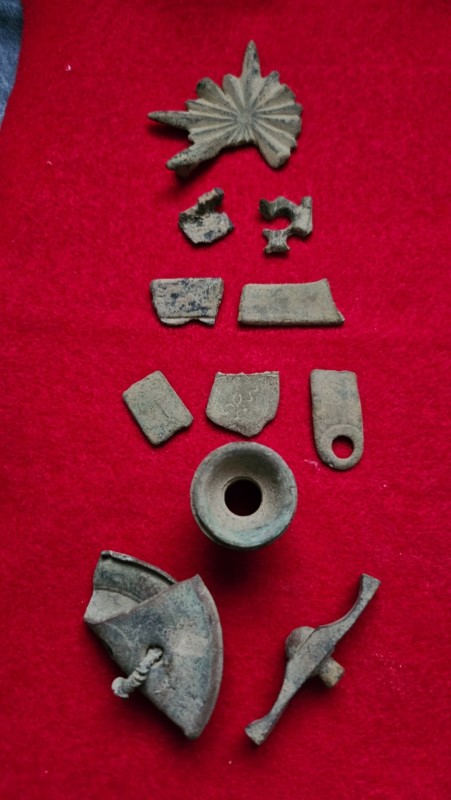
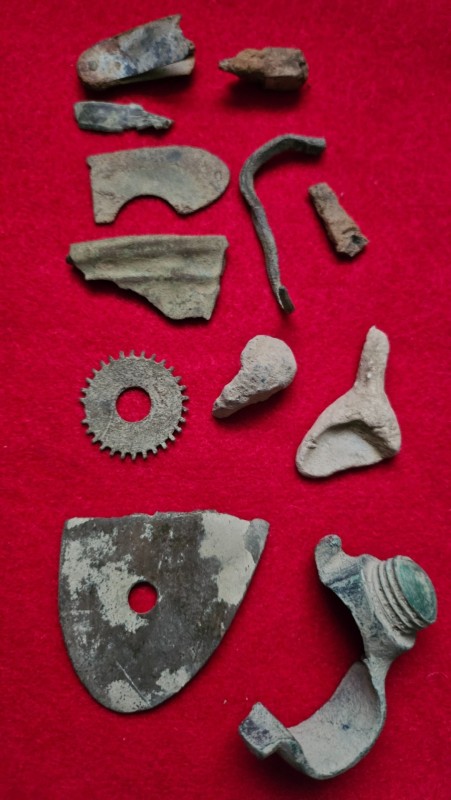
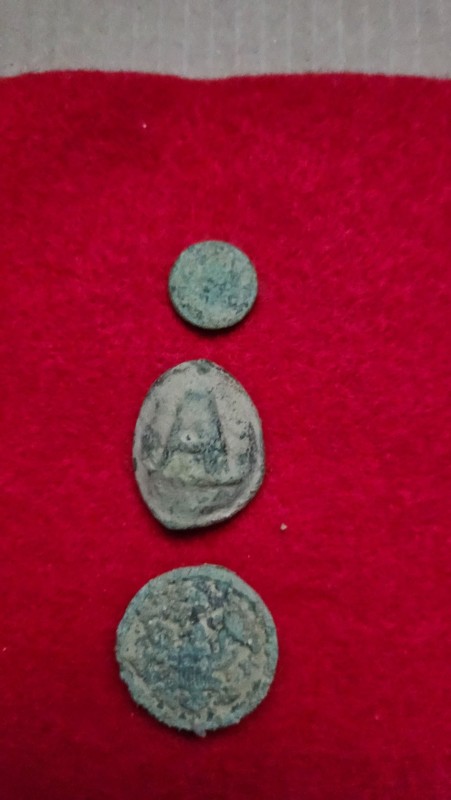
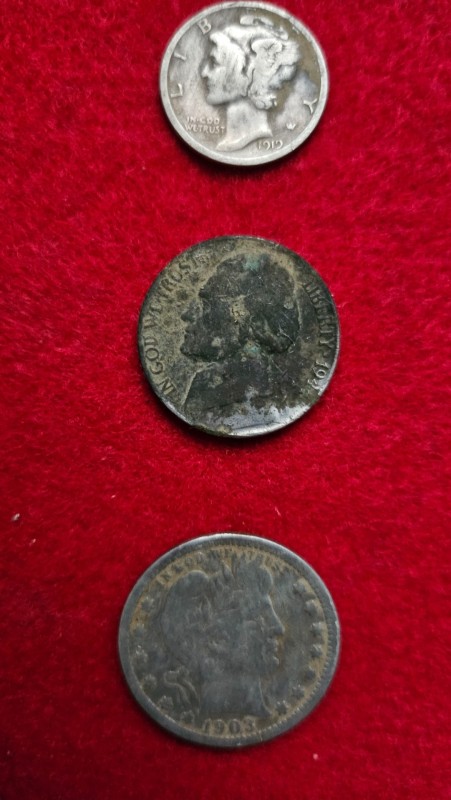

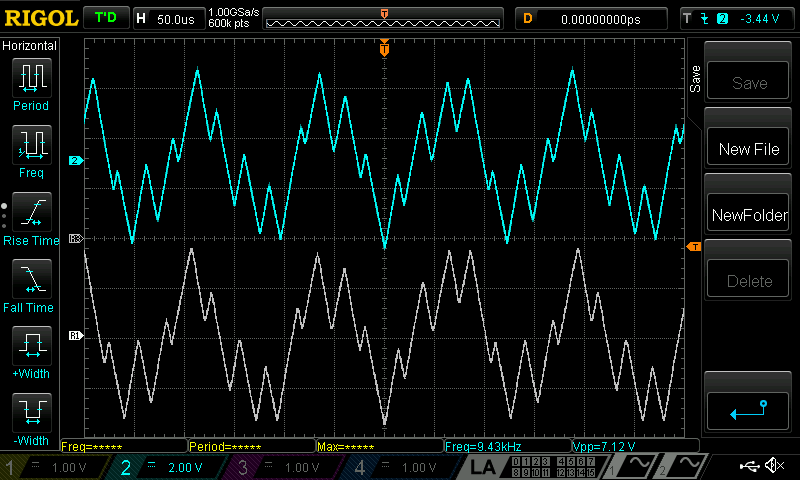
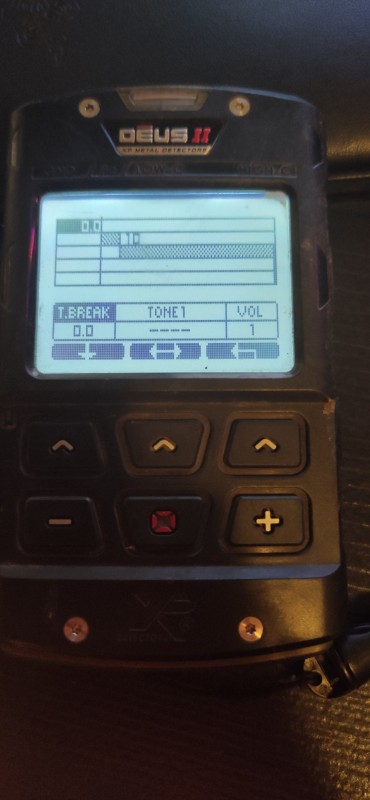
Hot Field Time Machine: Big Brass, Baubles, A Block And A Barber
in Metal Detecting For Coins & Relics
Posted
Agree. I noticed that too. It's a mystery.